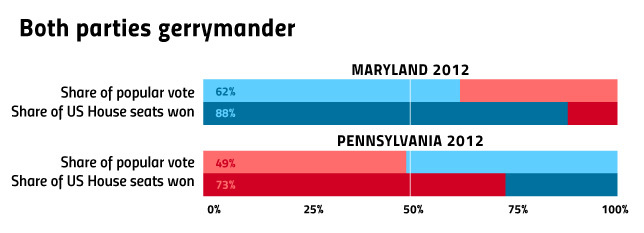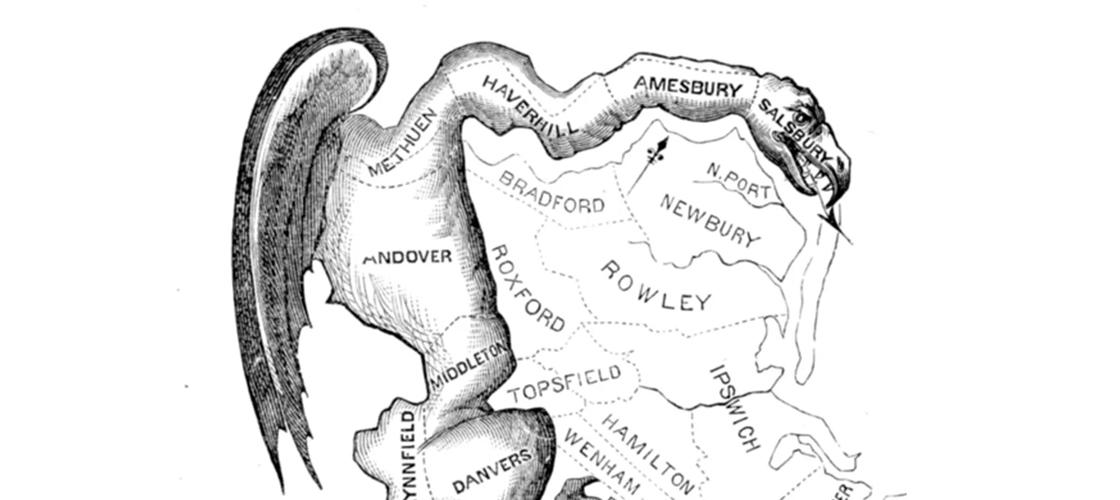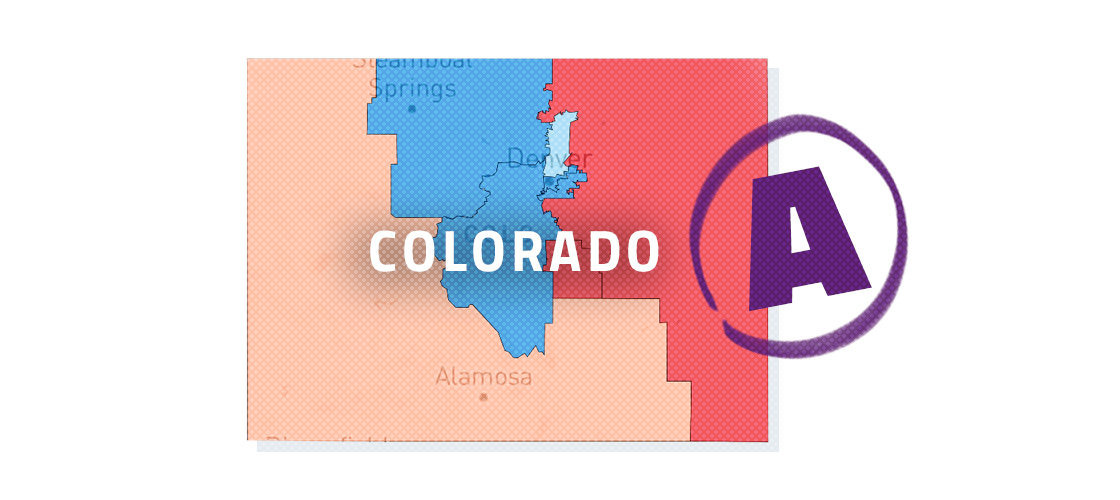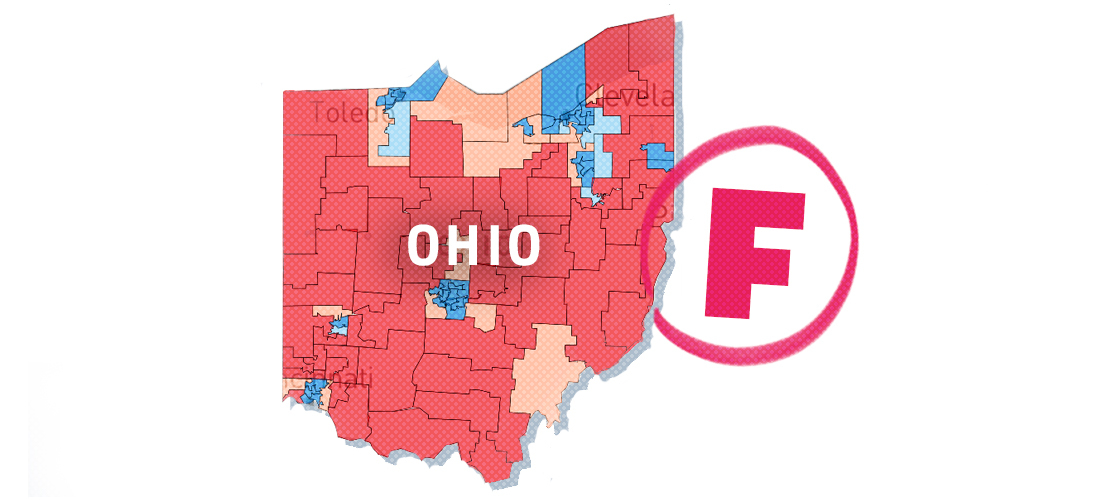
September 24, 2021
By: Ilana Foggle
The once-in-a-decade redistricting process is underway across the country, and states are beginning to release their proposed voting maps that will be in place for the next ten years. RepresentUs partnered with the Princeton Gerrymandering Project to create the Redistricting Report Card to combat anti-democratic mapmaking technology with pro-democratic, transparent technology. Before diving into the most recent report card for states like Ohio and Colorado, let’s talk about gerrymandering.
Gerrymandering is the practice of redrawing district lines to give an artificial advantage to one person, party, or group over another – and it's a big reason why our elections aren't fair and competitive. The most common type of gerrymandering is partisan gerrymandering, where district lines are drawn strategically around groups of people that reliably vote for one party. As a result, the party drawing the lines gets more representatives elected than they would with fairly drawn districts.

Gerrymandering is cheating – plain and simple.
Whether it’s Republicans in Pennsylvania or Democrats in Maryland, both parties use gerrymandering for their own political benefit.

Ending gerrymandering nationwide is not a partisan issue. Republican, Democratic, and Independent voters alike have a stake in banning this suppressive tactic in order to achieve true, fair representation. And guess what? 90% of voters agree that gerrymandering is a major problem.
Here’s the thing: gerrymandering is not new. In fact, the practice has been around for over 200 years.
Yup, you heard that right. Massachusetts Governor Gerry approved a redistricting map with a salamander-shaped district in 1812. The Salem Gazette, which coined the term “gerrymandering,” wrote that the law would inflict “a grievous wound on the Constitution.”

Surprise, surprise – they were right. Due to the new district map, the Federalist Party was able to win the governor’s mansion and take control of the Massachusetts State Senate in the subsequent election, proving the success and unlimited potential of the infamous gerrymander. Even so, politicians in 1812 could not have predicted the power that partisan gerrymandering would have on our elections today. The gerrymandered district that Governor Gerry signed off on looks quaint compared to a gerrymandered district today.
While gerrymandering has existed since 1812, the practice has become more common and more extreme due to increasingly sophisticated data, innovative map-drawing techniques, and hyperpolarization.
So, let’s break down our Redistricting Report Card.
So far, we have released report cards for two states: Colorado and Ohio. And, boy, these maps could not be more different.
First up: Colorado. Colorado used an independent redistricting commission for the first time, which was created by voter-initiated amendments in 2018 (woohoo, go Colorado voters!). An independent redistricting commission is a nonpartisan body separate from the state legislature that is responsible for drawing new district maps. This takes the power out of the hands of partisan politicians and puts it back into the hands of the voters – where it belongs. The Colorado independent commission released draft maps back in June for public feedback and released their latest draft on September 15th. Our report card gave Colorado a glowing “A” for their fair maps, which showed no explicit advantage to either political party.

And then, there’s Ohio. Like Coloradans, Ohioans in 2018 voted overwhelmingly for a ballot measure requiring bipartisan redistricting commissions. I am proud to have been one of those Ohio voters. Still, I can’t help but feel like it was all a waste.
Why? Well, we gave Ohio’s proposed statehouse maps a big, fat “F” for their blatantly partisan maps and heinously gerrymandered districts. Despite installing a bipartisan redistricting commission, the GOP-led state legislature hijacked the map-drawing process to create districts in their favor. Their proposed map falls far below the fair range for partisan fairness when compared to over a million simulated Ohio House maps that do achieve fairness metrics.

How do we fix this?
The Freedom to Vote: John R. Lewis Act would have ended gerrymandering and ensured free and fair elections for all Americans, but the bill has stalled in Congress.
However, the fight isn’t over yet – and we’ve only just begun updating our Redistricting Report Card for states across the nation. We are committed to increasing transparency throughout the redistricting process for voters and advocates like you.